According to today’s data ΕΛΣΤΑΤharmful emissions of CO2 into the atmosphere are gradually decreasing.
In particular, carbon dioxide emissions in 2020 amounted to 69,771.9 thousand tons, which indicates a decrease of 13.6% compared to 2019 (80,778.6 thousand tons). This decrease is mainly due to a significant reduction in emissions from the electricity, natural gas, steam and air conditioning sector of economic activity.
- The transportation and storage sector had the most important contribution to CO2 emissions with a share of 29.3% of total CO2 emissions in 2020 and 27.8% in 2019.
- The electricity, natural gas, steam and air conditioning sector participated with a share of 28.9% of total CO2 emissions for 2020. The corresponding participation for 2019 was 34.1%.
- The “manufacturing” sector participated with a share of 20.5% of all CO2 emissions for 2020. For 2019, the corresponding percentage was 19.3%.
- The “other services” sector participated with a share of 1.8% of total CO2 emissions in 2020 and 1.6% in 2019.
Households also showed a significant contribution to CO2 emissions: 17.6% in 2020, while the corresponding contribution in 2019 was 15.9%.
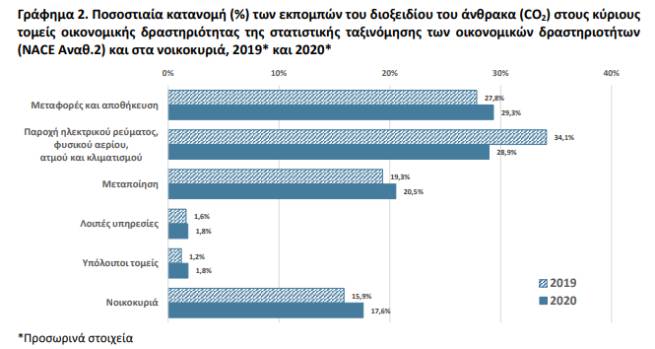
Methane (CH4)
In 2020, 92.5% of CH4 emissions came from two sectors of economic activity with almost equal contributions: “Water, Wastewater, Waste Management and Remediation” and “Agriculture, Forestry and Fisheries” with a share of 47.1% and 45.4%.
In 2019, the respective percentages were 45.4% and 44.2%. Households participated at a rate of 2.4% in 2020 and 2.5% in 2019.
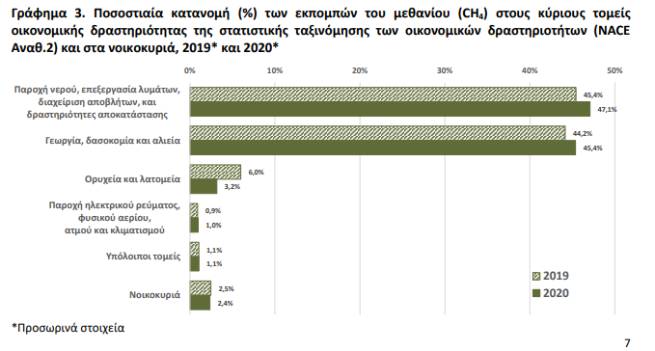
Nitrous oxide (N2O)
The agriculture, forestry and fisheries sector contributed the most to N2O emissions, with 74.5% in 2020 and 73.6% in 2019. Other sectors of the economy were:
- “Transportation and storage” with a rate of 11.4% for 2020 and 10.8% for 2019.
- “Water supply, wastewater treatment, waste management and rehabilitation activities” with a rate of 6.6% for 2020 and 6.9% for 2019.
- Household participation accounted for 5.0% of all N2O emissions in 2020 and 5.2% in 2019.
The total annual N2O emissions from 2011 to 2020 are presented in Table 1 and Figure 6.
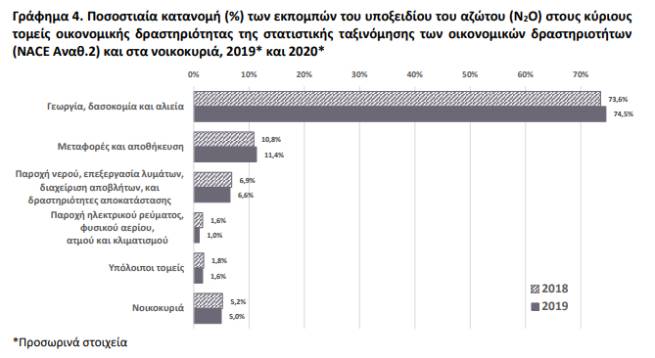
Fluorinated gases (hydrocarbons, perfluorocarbons, sulfur hexafluoride)
Emissions of hydrofluorinated carbons (HFCs) occurred mainly from the use of refrigeration and air conditioning units in all sectors of economic activity and in households. In 2020, the economic activities that contributed significantly to HFC emissions were “manufacturing” and “other services”, with shares of 43.2% and 34.7%, respectively. Household participation was also significant, at 14.1% in 2020.
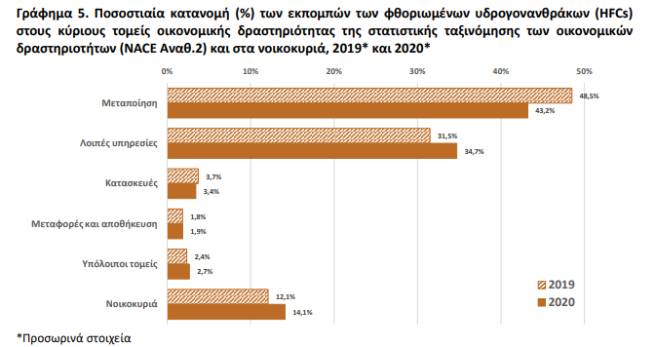
In 2020, emissions of other gaseous pollutants fell mainly on the sectors “transport and storage” with a share of 44.6%, “agriculture, forestry and fisheries” with a share of 10.0% and “production” with a share of 9.2 %. Households also participated with a rate of 19.7% for 2020.

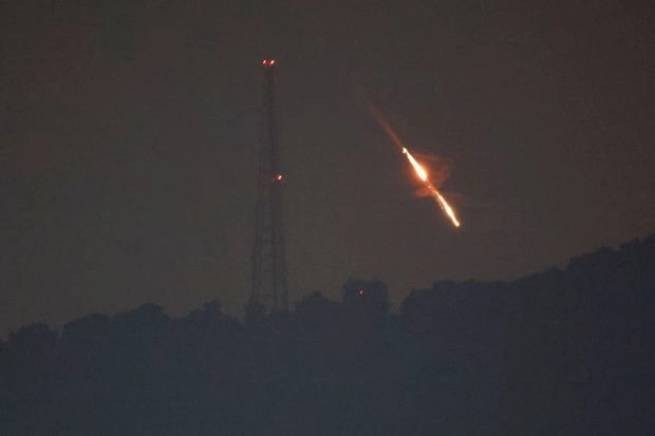


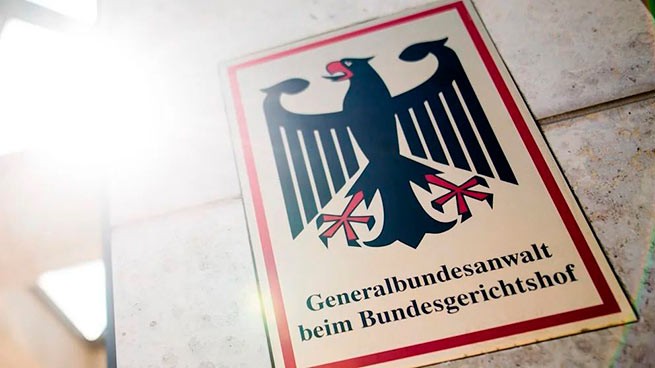
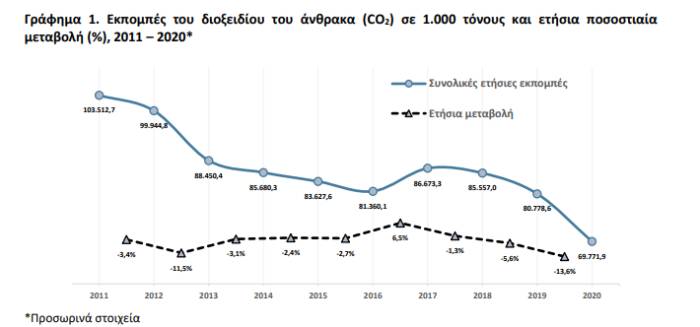

More Stories
Most polluted countries in 2023: Greek regions with worst air quality
Clearchos Marousakis warns of hail and tornadoes (video)
G. Kallianos: “24-hour bad weather with rain and downpours”